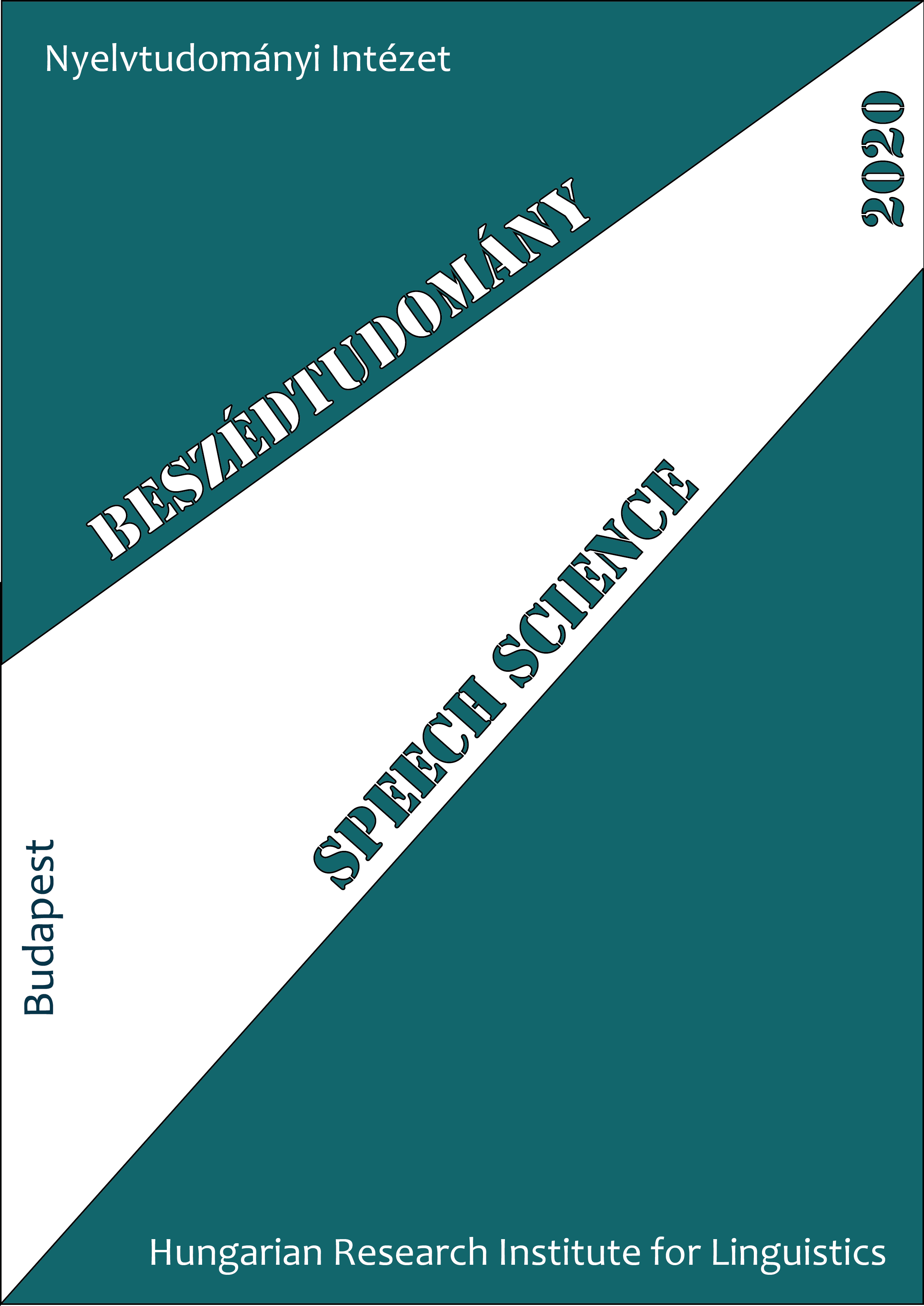A prozódiailag jelölt fókusz azonosításának elsajátítása
Abstract
The goal of the present study is to explore whether and how the development of the comprehension of prosodic focus-marking may be affected by the variation found in the marking of focus across different languages. We investigate focus-identification in Hungarian, a language that not only has prosodic focus-marking, but mandatorily uses syntactic focus-marking as well. In pursuit of comparability, the experiment this paper reports on employed a task that was recently applied by Szendrői et al. (2018) in a study of English, German, and French pre-school children. Our hypothesis was that the systematic syntactic marking of focus in Hungarian diminishes the disambiguating role of prosodic marking for the child. Therefore we expected that in sentences in which syntactic focus-marking fails to unambiguously identify the focus, the comprehension of prosodic focus-marking will be delayed in comparison to the languages investigated in Szendrői et al., in which syntactic focus-marking is at best only an option. This prediction was borne out by our data: at age four Hungarian children
give congruent responses to sentences containing non-default narrow (subject) focus roughly half as often as their English, German and French peers, who already exhibit adult-like performance at this age. By contrast, Hungarian children reach the adult-like level only at age seven. Thus, the paper makes a strong case that, similarly to the acquisition of the production of prosodic focus-marking, the developmental trajectory of the comprehension of prosodic focus-marking is also robustly affected by the cross-linguistic variation found in the marking of focus.




